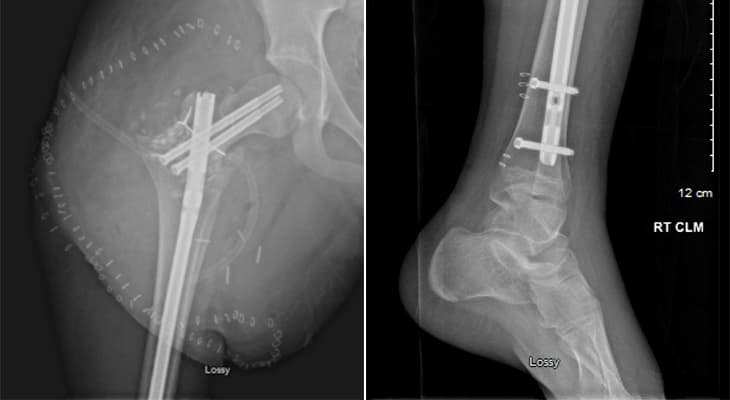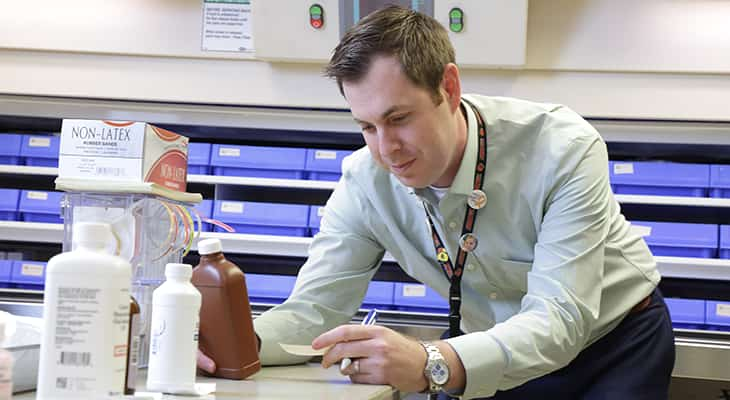Offering the latest childhood brain tumor therapies so kids and their families don’t have to travel far from home
Brain tumors are now the leading cause of cancer-related deaths among children. Year after year, Kentucky ranks among states with the highest incidence of children with brain tumors, and Kentucky currently ranks third in the [...]
View moreOptimizing leukemia/lymphoma care with a multidisciplinary team
The most effective way to optimize patient care revolves around a combination of physicians, nurses, pharmacists, nurse practitioners, social workers and case managers. Members of the team work together to help with decision-making in each […]
View moreAccess to evolving clinical science close to home
Norton Cancer Institute’s clinical research program was developed to ensure that cancer patients in our community and region have access to evolving clinical science. Guided by an experienced cadre of physicians and supported by a […]
View moreGroundbreaking research and exceptional care come with Norton Children’s Cancer Institute/UofL School of Medicine affiliation
This is an exciting time for Norton Children’s Cancer Institute, affiliated with the UofL School of Medicine. The clinical-academic partnership for all pediatric hematology/oncology inpatient, outpatient and pediatric infusion care provides more integrated care options, […]
View morePediatric oncology case study: Rotationplasty aids osteosarcoma recovery
The patient A 12-year-old female presented to Norton Children’s Hospital emergency department with a one-week history of worsening right knee pain and swelling. There was no known trauma, but pain started after exertion in gym […]
View moreThe latest advancements in pediatric cancer research for patients in Louisville and Southern Indiana
At any time, Norton Children’s Cancer Institute, affiliated with the UofL School of Medicine, is participating in dozens of clinical trials, representing a wide gamut of diagnoses and moving our understanding of childhood cancers forward. […]
View moreReferring suspected ALL cases promptly is key to preventing delayed diagnosis
Acute lymphoblastic leukemia (ALL) is the most common cancer among children, and its symptoms can be vague. Some, but not all, children with ALL present with a mix of symptoms that can include fever, fatigue […]
View morePharmacists help facilitate rigorous treatment plans for kids with cancer
Every day at Norton Children’s Cancer Institute, affiliated with the UofL School of Medicine, pharmacists round with the teams. We’re part of the decision-making process for hematology, oncology and stem cell transplant patients. Our goal […]
View morePediatric hematology/oncology specialist joins Norton Children’s Cancer Institute
Natalie F. Slone, D.O., a pediatric hematology/oncology specialist focusing on solid tumors and sarcomas in children and teens, has joined Norton Children’s Cancer Institute, affiliated with the UofL School of Medicine. Her interest and passion for […]
View moreHelping families of pediatric cancer patients with their emotions (Part 2 of 3)
Addressing the emotional effects of cancer and its treatment on children and young adults can improve outcomes and help manage adverse effects of treatment. Norton Children’s is presenting a three-part series drawing from a recent […]
View moreJun Zhao, D.O., named physician lead for outpatient care at Norton Children’s Cancer Institute
Jun Zhao, D.O., pediatric hematologist/oncologist, has been named physician lead for outpatient care at Norton Children’s Cancer Institute, affiliated with the UofL School of Medicine. Dr. Zhao will work with Ashok B. Raj, M.D., medical […]
View moreHelping pediatric cancer patients with the emotional effects of disease and treatment (Part 1 of 3)
Addressing the emotional effects of cancer and its treatment on children and young adults can improve outcomes and help manage adverse effects of treatment. Norton Healthcare is presenting a three-part series drawing from a recent […]
View more











